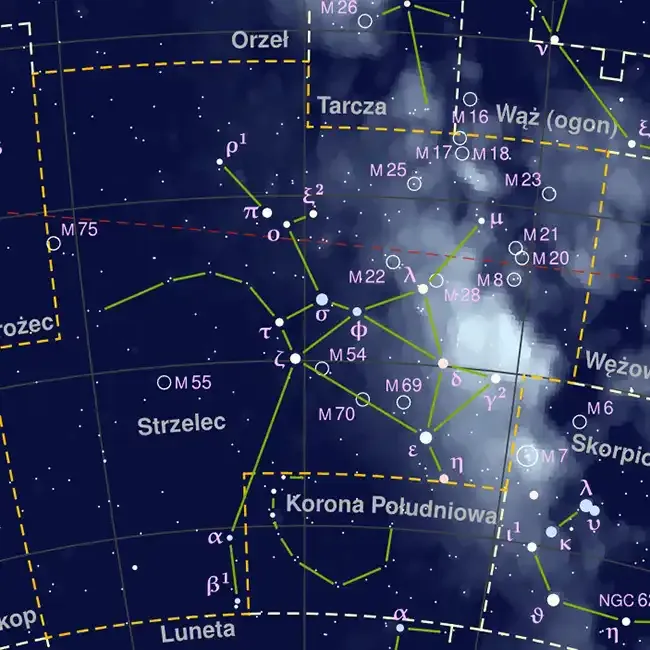
Sagittarius is a prominent constellation located in the southern celestial hemisphere. Its name is Latin for "archer," and it is traditionally depicted as a centaur drawing a bow. Sagittarius is one of the constellations of the zodiac and lies between Scorpius to the west and Capricornus to the east. It is most notable for containing the asterism known as "The Teapot," a recognizable pattern of stars that resembles a teapot.
Key Features
One of the key features of Sagittarius is its position along the Milky Way, making it a rich area for stargazing. The constellation is home to several deep-sky objects, including the Lagoon Nebula (M8), the Trifid Nebula (M20), and the Omega Nebula (M17). The center of our galaxy, the Milky Way, is also located in the direction of Sagittarius, providing a dense field of stars and other celestial objects.
Mythology
In Greek mythology, Sagittarius is often associated with the centaur Chiron, although in some versions, it represents the more wild and uncivilized centaurs, specifically Crotus, the son of Pan. Crotus was a skilled archer and is credited with inventing the bow. The constellation symbolizes his image, commemorating his talents and contributions.
Notable Stars
- Kaus Australis (Epsilon Sagittarii): The brightest star in Sagittarius, Kaus Australis, marks the southern end of the archer's bow.
- Nunki (Sigma Sagittarii): This is the second brightest star in the constellation and is part of the Teapot's handle.
- Kaus Media (Delta Sagittarii): Located in the middle of the bow, this star is part of the Teapot asterism.
- Kaus Borealis (Lambda Sagittarii): The northern star of the bow, marking the top of the Teapot's lid.
Visibility
Sagittarius is best viewed in the summer months for observers in the Northern Hemisphere, particularly in July and August. It is visible between latitudes 55°N and 90°S. For Southern Hemisphere observers, Sagittarius is well-placed high in the sky during the winter months.
Tips for Observing
- Find a dark location: Since Sagittarius is situated in a dense region of the Milky Way, a dark sky away from city lights will reveal its full splendor, including many faint stars and deep-sky objects.
- Look for The Teapot: The Teapot asterism within Sagittarius is a useful guide for identifying the constellation. Once you spot the Teapot, you can explore the surrounding area to find nebulae and star clusters.
- Use binoculars or a small telescope: Sagittarius is rich with deep-sky objects, and even modest optical equipment can reveal stunning details, especially the Lagoon and Trifid Nebulae.
- Observe during summer nights: In the Northern Hemisphere, summer is the best time to observe Sagittarius. The constellation will be high in the southern sky, providing optimal viewing conditions.
